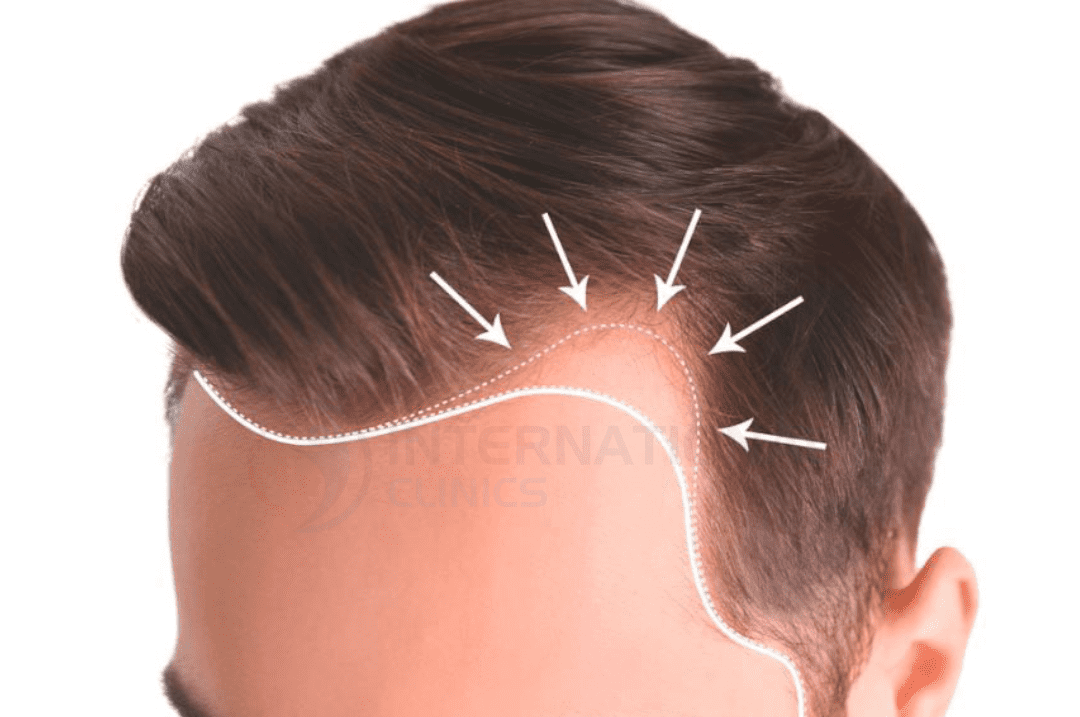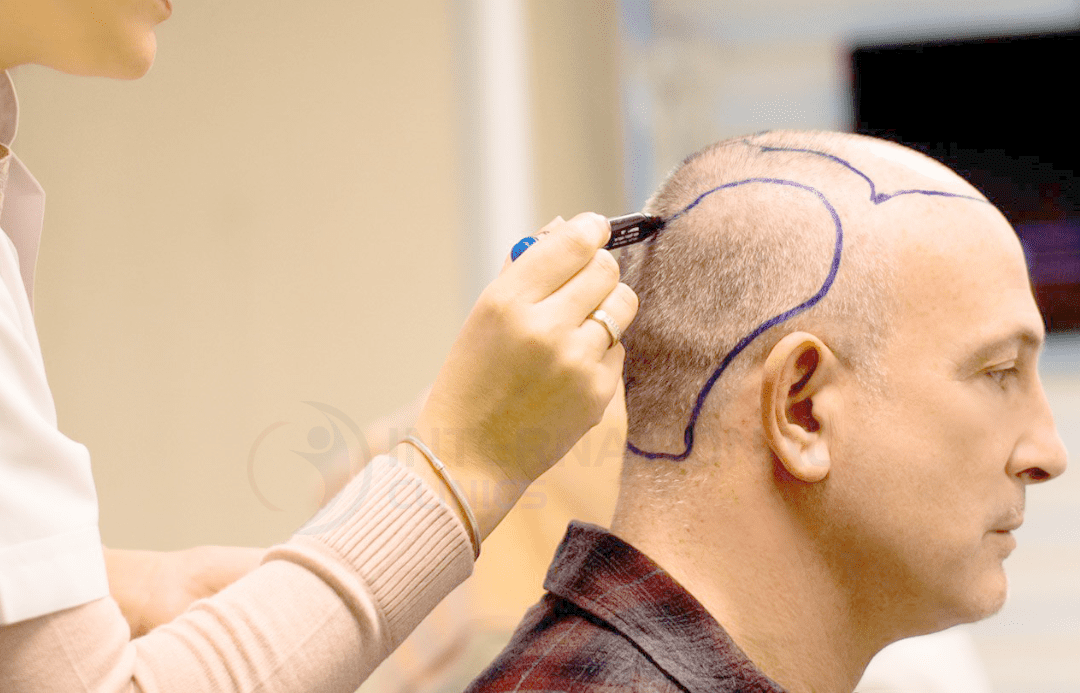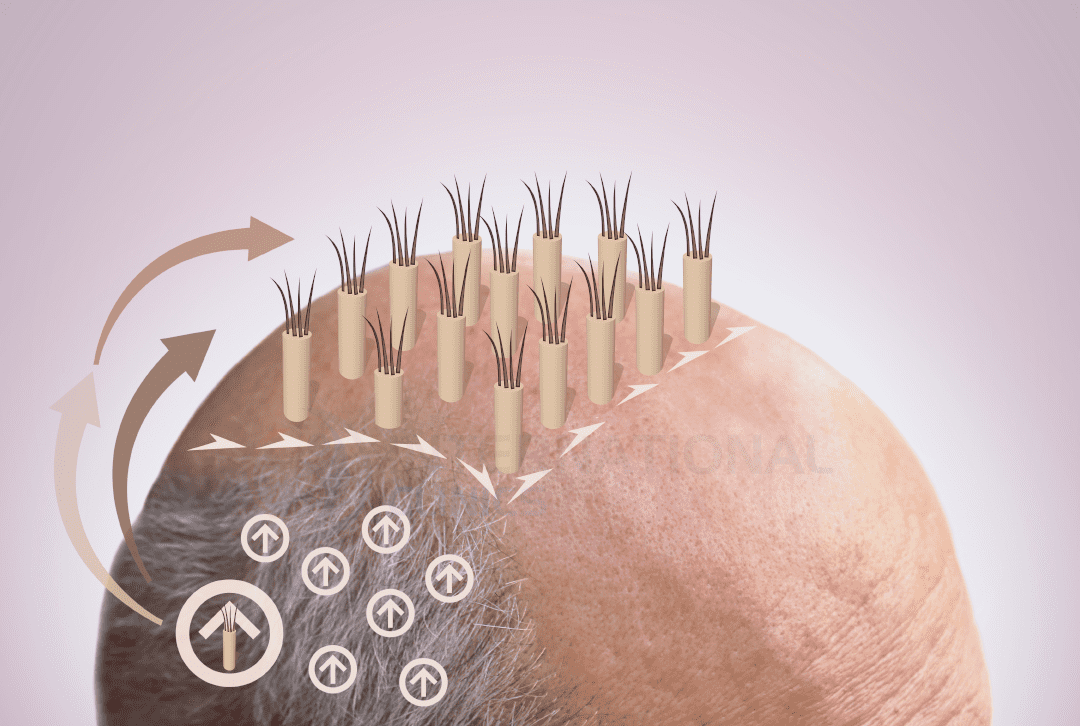




Hair transplant procedures used to be relatively primitive with outcomes that were mixed at best, unfortunately. The techniques needed to be better defined, and few surgeons had the expertise to perform such procedures.
Early approaches involved taking large grafts from the scalp, which-unsurprisingly- often resulted in unnatural-looking clumps of hair. However, over time, the techniques slowly improved as doctors experimented with smaller grafts and different implantation methods.
By the 1990s, the procedures yielded better and more satisfactory cosmetic results. Refining and standardizing the technical details took considerable time and effort from skilled surgeons.
Above all, the breakthrough came in the 1980s and 1990s when surgeons increasingly adopted follicular unit transplantation (FUT) and follicular unit extraction (FUE).
These micro and mini grafting techniques allowed for natural hairlines and density because hair could be transplanted in individual follicular units. The new instrument also enabled more precise graft dissection, especially in Turkey.
Nonetheless, room for improvement still exists today, but overall, current techniques have evolved remarkably from earlier crude attempts, leading clinics now to advertise over 95% graft survival rates and excellent cosmetic outcomes.

A hair transplant is a surgical procedure to transfer hair follicles from one area of the scalp to areas that lack hair growth. It works by relocating hair from the back and sides of the head to areas with thinning hair or bare patches.
This is effective because hair follicles at the back and sides are genetically resistant to the DHT (dihydrotestosterone) hormone, which typically causes male or female pattern baldness.
The follicles transplanted to other areas can continue growing normally regardless of DHT influence.
However, the technique requires careful planning and execution. After all, natural-looking hair depends not just on transplanting enough follicles but arranging them appropriately for natural density and angles.
The critical first step involves the precise extraction of hair graft bundles from the donor area, typically with a punch tool to minimize damage. The surgeon targets hair groupings from one to four hairs since these micro and mini grafts mimic natural hair group emergence from follicles.
Nonetheless, considerable surgical skills are needed when preparing small recipient sites to embed follicular units. The aesthetic challenges shouldn’t be underestimated since irregular placement can look pluggy and unnatural if the surgeon lacks experience.
With careful angling and spacing, however, the tiny wounds in the head heal within days while the follicles regenerate into normally growing and lasting hair. In any case, the results often vary based on factors like the surgeon’s technique used to achieve optimal density without damaging existing hair.
Thus, when performed by a specialist, a hair transplant can indeed achieve natural enhancement that others may not even notice or distinguish from natural hair.
Two main surgical techniques exist and are commonly used by surgeons for transplanting new follicular units from donor areas:

This is sometimes called the “strip method” by people. The surgeon removes a narrow strip of skin from the back of the scalp under local anesthetic.
After all, this area contains hundreds of genetically resistant hair follicles, which are perfect for transplantation. However, it leaves a thin linear scar at the donor site.
The strip is then dissected by skilled technicians into individual follicular units for implantation into tiny recipient sites made using fine blades and needles.
Nonetheless, creating the recipient sites at proper angles and densities requires considerable surgical skills to ensure a natural look.
This is a more advanced approach that has surged in popularity. However, it requires specialized punch tools to individually extract full follicular units from the scalp one by one.
Often, the small round extraction sites heal without visible scarring so patients can wear very short hairstyles afterward.
Nonetheless, FUE is more time-consuming than FUT, but it offers more flexibility for better-shaped hair patterns. Besides, it enables repeated sessions to bolster density over time since it spares more donor hair initially.

Both men and women can be candidates for hair transplantation (if they have adequate donor hair). Some common cases include:
This typical hair loss pattern starts above the temples and then expands to thin the crown over time.
However, the hair at the back and sides tends to have lifelong permanence. Usually, an experienced surgeon can redistribute DHT-resistant follicular units from permanent zones to rejuvenate or redesign the hairline and top.
After all, redistributing one’s follicles enables the most natural-looking, lifelong results compared to medications or hairpieces.
Many women develop gradual diffuse shedding across the top of the scalp due to changing hormones, stress, styling damage, or genetics. However, zones at the sides and back are often less affected.
To solve this problem, surgeons can transfer permanent follicles to the thinning areas to restore former density.
However, realistic expectations are important since the scalp can only hold so much transplanted hair before appearing unnatural.

Injuries, burns, past surgeries, or unfortunate trauma can damage follicles and leave permanent bald patches with visible scar tissue.
Thankfully, a skillful transplant surgeon can embed healthy follicular units within scar tissue to camouflage the marks and regenerate lost hair form. After all, careful implantation can enable hair to regrow seamlessly despite surrounding damage.
Some people lack eyelashes or eyebrows due to genetic factors, accidents, medical treatments like chemotherapy, or conditions like alopecia areata.
However, talented surgeons can transplant follicular units from the scalp to sparse eyebrows or lash lines for perfectly natural enhancement.
Planning a hair restoration or transplant procedure requires certain careful preparations to guarantee a good outcome. Typical steps include:
Researching the training talents of your surgeon and hair transplant before and after photos of patients who chose the surgeon.
After all, this procedure relies extensively on the naturalness of hairline design and graft placement density, which all rely, in turn, on the surgeon’s experience. You need to find a specialist with expertise in hair loss patterns and skin types.
During initial meetings, the patient should declare their aesthetic goals, and the surgeon should assess the donor area, scalp laxity, potential positioning, and more.
However, reasonable objectives are important since exceeding density limits can seem unnatural. Thus, in-depth discussions should align expectations with realistic surgical possibilities.
Patients must cease blood thinners (like aspirin) for a certain period to minimize bleeding risks during the surgery.
However, critical prescription medications may require specialized guidance from physicians to manage discontinuation.
Because the surgery involves local anesthetics, patients cannot drive themselves home. Making advance arrangements for transportation and even in-home support for the first day aids recovery, especially if undergoing large grafting sessions.
Hair transplantation is a minor surgical procedure that involves extracting donor hair follicles from one area of the scalp and carefully implanting them into thinning or balding parts.
The objective is to give the illusion of a fuller head of natural hair. Hence, it’s an aesthetically driven cosmetic treatment and works best for those with healthy donor hair available at the back and sides.
There are a few key steps of the follicular unit transplantation (FUT), which is the most common form of the procedure:
The surgery starts by trimming the hair in the donor area, usually at the back and sides of the scalp.
Then, a local anesthetic is administered to numb the scalp before carefully excising a linear strip of skin containing hair follicles with their blood supply intact.
Nonetheless, follicular unit extraction (FUE) is also an option, using a hollow punch tool to extract intact follicles individually from the donor area.
The surgeon then prepares small incision sites (where the transplanted hair will be placed across the balding areas). The number, angle, and alignment of incisions are planned to achieve a natural growth pattern based on the person's age, hair color, caliber, and character.
Finally, using fine microblades, the surgeon implants each hair follicle unit into its own incision. Generally, more than 1000 grafts can be transplanted in a single session.
Based on our observations, the vast majority of hair transplants achieve successful, aesthetic outcomes, but the “invasive” nature of the procedure does in fact carry potential risks and complications, especially if not performed properly. Some patients may experience:
First of all, hair transplant has become one of the cheapest cosmetic procedures, especially in Turkey.
Choosing a hair transplant is a good investment, at least for men who associate good-looking hair with confidence. The cost of the procedure can range anywhere from 2000 US dollars in Turkey to more than 5000 US dollars in the United States. The cost of the procedure can be analyzed as follows:

Commonly, hair transplants can permanently place healthy follicles that grow for life; however, diligent aftercare is important for the first 12 months to support graft survival and optimal growth.
During initial healing, grafts are vulnerable if left without enough blood supply. Patients should follow surgeon’s instructions to nurture the new hair:
Gauze dressings should be continued for at least 5 days to protect grafts and prevent dislodgement.
Nonetheless, rewrapping with medical tape instead of using pins prevents crushing grafts if the dressing feels loose. The head should be positioned elevated on 2-3 pillows even when resting to minimize swelling around grafts.
You may need to take oral antibiotics as prescribed to prevent infection for at least 10 days. Anti-inflammatory meds can also alleviate discomfort. Minoxidil topical solution aids blood flow and average growth per graft.
You may need to avoid straining activity for 3 weeks to prevent grafts popping-out and failed growth. Weightlifting, sports, sex, and heavy housework are prohibited, but light walking is permitted after 2 weeks. Hats provide protection beyond the first month against trauma to fresh grafts.
Around 5 days after surgery, gentle shampooing is a good step to prevent scab formation that interferes with growth. Hair dyes or colors should be avoided for the first 6 months at a minimum.
A crucial decision that affects the outcomes of a hair transplant procedure is selecting the right hair surgeon or clinic. Patients should carefully consider the following:
Clearly, hair transplant is an effective solution for many men and women struggling with progressive hair loss or bald spots. However, the procedure does come with inherent risks and limitations that require careful thought.
The surgery is complex and exacting—demanding an experienced, talented surgeon to implant follicles at precise angles and densities for the most natural results.
After all, a good transplant should be undetectable and look “natural” to an extent. Nonetheless, even a flawlessly executed transplant cannot override our genetic programming indefinitely.
The transplanted hairs may continue growing for a lifetime, but the progression of androgenetic alopecia can still leave recipients with thinning areas around the implants over time. So, while transplants can permanently restore hair, additional treatments may be needed to complement the results years later as we continue to age.
Additionally, candidates must have adequate donor hair supply and density for extraction at the back of the scalp. Those severely balding or with insufficient donors may not qualify for standard transplants. At the end of the day, under the right conditions hair transplants can permanently regenerate lost locks with minimally detectable results.
A hair transplant is a procedure to move hair follicles from one part of the scalp to balding areas. It works by extracting healthy hair follicles from areas like the back of the head that are genetically resistant to balding.
Yes, the two main types of hair transplant procedures are follicular unit transplantation (FUT) and follicular unit extraction (FUE).
Some common reasons are male or female pattern baldness, receding hairline, thinning hair on top of the head or crown, and injury or trauma that causes scarring and hair loss.
The average cost of a hair transplant in the U.S. ranges from 4,000 to 15,000 US dollars, while it could cost less than 2000 US dollars in Turkey.
Major factors affecting the cost are the number of grafted follicles, technique used (FUT vs FUE), surgeon’s skills and experience, and location of the practice.
Webmd, BetterHealth, AAD, HealthLine, My Cleveland Clinic, NHS, PlasticSurgery, Pennmedicine, Treatment Rooms London, HealthDirect,
The editorial team of International Clinics
Our medical consultants are available around the clock to answer your questions, completely free of charge.